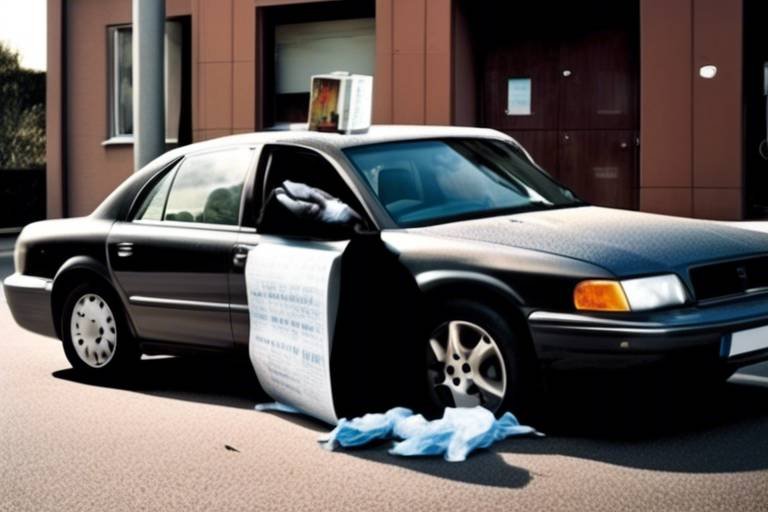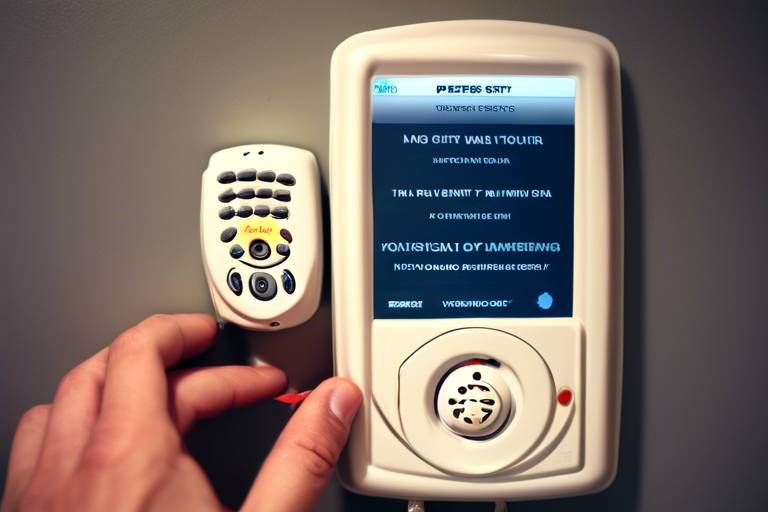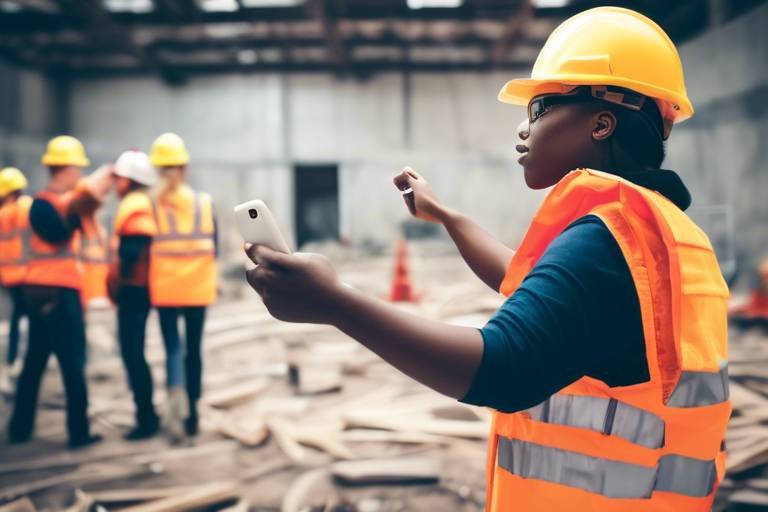Essential Safety Precautions for DIY Repair
When it comes to DIY repairs, safety should always be your top priority. It’s easy to get caught up in the excitement of a new project, but neglecting safety precautions can lead to accidents that could have been easily avoided. Whether you’re fixing a leaky faucet, painting a room, or tackling a more complex renovation, understanding and implementing essential safety measures is crucial. Not only does it protect you from potential injuries, but it also ensures that your project is completed efficiently and effectively.
Imagine you’re about to embark on a weekend project to transform your living room. You’ve got your tools ready, your paint colors picked out, and your playlist set. But wait! Have you taken the time to consider the safety measures you need to put in place before you dive in? Just like you wouldn’t drive a car without buckling your seatbelt, you shouldn’t start your DIY project without ensuring you’re prepared for any hazards that might come your way.
One of the first steps in ensuring your safety is to familiarize yourself with Personal Protective Equipment, or PPE. This gear is designed to protect you from various risks associated with home repairs. From safety goggles that shield your eyes from dust and debris to gloves that protect your hands from sharp objects and chemicals, having the right PPE can make a world of difference. Always remember, it’s better to be over-prepared than to risk an injury that could have been easily avoided.
In addition to wearing the right gear, understanding how to handle your tools safely is paramount. Each tool comes with its own set of risks, and knowing how to operate them properly can prevent accidents. For example, when using power tools, always ensure that you’re following the manufacturer’s guidelines and recommendations. This includes checking the tool for any defects before use, which we will discuss in detail later on.
Creating a safe work environment is another critical aspect of DIY safety. A cluttered workspace can lead to trips and falls, while poor lighting can increase the risk of accidents. Take a moment to organize your area, ensuring that everything you need is within reach and that pathways are clear. Good ventilation is also essential, especially when working with paints or solvents, as it helps to minimize exposure to harmful fumes. Think of your workspace as your sanctuary; a safe and organized area allows you to focus on your project without distractions or hazards.
Lastly, being prepared for emergencies is vital. Accidents can happen, no matter how careful you are, so having a plan in place can make all the difference. This includes having a well-stocked first aid kit nearby and knowing how to respond in case of an injury. Whether it’s a minor cut or something more serious, knowing what to do can save time and potentially save a life. So, as you gear up for your DIY adventure, take a moment to reflect on these essential safety precautions. They’re not just guidelines; they’re your best friends in ensuring a successful and safe project.
Here are some common questions related to DIY safety precautions:
- What is Personal Protective Equipment (PPE)? PPE refers to protective gear designed to safeguard you from various hazards while performing DIY tasks.
- Why is tool inspection important? Regularly inspecting tools can help identify defects before they lead to accidents, ensuring safe operation.
- What should I include in my first aid kit? A basic first aid kit should include adhesive bandages, antiseptic wipes, gauze, scissors, and pain relievers.
- How can I create a safe work environment? Keep your workspace organized, ensure proper lighting and ventilation, and remove any clutter that could pose a risk.

Understanding Personal Protective Equipment (PPE)
When embarking on a DIY project, one of the most critical aspects to consider is Personal Protective Equipment (PPE). This gear acts as your first line of defense against potential injuries that can arise from various tasks. Imagine you're about to dive into a pool; wouldn't you want to wear a swimsuit? Similarly, when you're getting your hands dirty with tools and materials, donning the right PPE is essential to keep you safe and sound.
PPE encompasses a range of protective gear designed to shield you from hazards. This includes items such as safety goggles, gloves, helmets, and ear protection. Each type of PPE serves a specific purpose, so understanding what you need for your particular project is vital. For instance, if you're working with power tools, safety goggles are non-negotiable to protect your eyes from flying debris. On the other hand, if you're handling chemicals or sharp objects, durable gloves become your best friend.
Here’s a quick rundown of common types of PPE you should consider:
- Safety Goggles: Protect your eyes from dust, debris, and splashes.
- Gloves: Keep your hands safe from cuts, chemicals, and abrasions.
- Ear Protection: Essential when using loud power tools to prevent hearing loss.
- Hard Hats: Necessary for overhead work to protect your head from falling objects.
- Respirators: Help filter out harmful dust and fumes when sanding or painting.
Now, you might be wondering, “How do I know which PPE is right for me?” It’s all about assessing the risks associated with your specific project. For example, if you're planning to do some heavy-duty sanding, a respirator is crucial to avoid inhaling fine particles. On the flip side, if you're simply painting a wall, a mask may suffice to keep paint fumes at bay.
Moreover, proper usage of PPE is just as important as wearing it. Ensure that your safety goggles fit snugly and that your gloves are appropriate for the task at hand. It’s not enough to simply have the gear; you need to use it correctly to maximize its protective capabilities. Always check for any signs of wear and tear before starting your project. A frayed glove or cracked goggles can compromise your safety, turning a simple DIY task into a potential disaster.
In summary, PPE is your armor when tackling DIY projects. By equipping yourself with the right protective gear and using it properly, you can significantly reduce the risk of injuries and ensure a safer working environment. So, before you dive into your next home improvement adventure, take a moment to gather your PPE. Trust me, your future self will thank you!

Tool Safety Guidelines
When it comes to DIY projects, ensuring safety while using tools is paramount. Whether you’re a seasoned handyman or a weekend warrior, understanding can mean the difference between a successful project and a trip to the emergency room. It’s not just about knowing how to use tools; it’s about using them wisely and responsibly. So, let’s dive into some essential tips that can help keep you safe while you’re getting your hands dirty.
First and foremost, always make sure you’re using the right tool for the job. It might be tempting to grab whatever’s closest, but using the wrong tool can lead to accidents and injuries. For instance, trying to hammer a nail with a wrench is not only inefficient but can also result in a nasty surprise if the tool slips. Instead, take a moment to gather the appropriate tools before you start. Here’s a quick guide to help you choose wisely:
| Task | Recommended Tool | Unsafe Alternatives |
|---|---|---|
| Driving Nails | Hammer | Wrench, Screwdriver |
| Cutting Wood | Hand Saw or Power Saw | Knife, Scissors |
| Drilling Holes | Drill | Screwdriver, Hammer |
Another critical aspect of tool safety is maintaining your tools in good condition. Just like you wouldn’t drive a car with a flat tire, you shouldn’t use tools that are damaged or worn out. Regularly inspect your tools for any signs of wear and tear. Look for things like:
- Frayed cords on power tools
- Rust or corrosion
- Loose handles
- Cracks in blades or cutting edges
If you notice any of these issues, it’s best to either repair or replace the tool before using it. This simple step can prevent accidents and keep you safe while you work.
Proper storage of your tools is also essential for safety. Leaving tools scattered around your workspace can lead to tripping hazards or accidental injuries. Instead, create a designated area for your tools. Use pegboards, toolboxes, or shelves to keep everything organized and easily accessible. Not only does this help you find what you need quickly, but it also keeps your workspace clutter-free, which is a significant safety benefit.
Lastly, always remember to follow the manufacturer’s instructions for each tool. It might seem obvious, but many accidents happen because people overlook this crucial step. Each tool is designed with specific safety features and operational guidelines. Familiarize yourself with these before use. If you’re unsure about how to operate a tool, don’t hesitate to seek guidance or watch instructional videos. Your safety is worth the extra time!
In summary, adhering to is not just a recommendation; it’s a necessity. By using the right tools, maintaining them properly, storing them safely, and following the instructions, you can significantly reduce the risk of accidents and injuries. So, gear up, stay safe, and enjoy your DIY adventures!
Q: What should I do if I find a damaged tool?
A: If you find a damaged tool, stop using it immediately and either repair it or replace it. Using damaged tools can lead to serious injuries.
Q: How often should I inspect my tools?
A: It’s a good practice to inspect your tools before each use. Regular maintenance can prevent malfunctions and ensure safety.
Q: Is it safe to lend my tools to others?
A: While it’s fine to lend tools, make sure the person borrowing them knows how to use them safely. You could also demonstrate proper use to ensure safety.
Q: What should I do if I have an accident while using tools?
A: If you have an accident, assess the situation. For minor injuries, use your first aid kit. For serious injuries, seek medical help immediately.

Inspecting Tools Before Use
When diving into a DIY project, one of the most crucial steps that often gets overlooked is inspecting your tools before use. Just like you wouldn’t drive a car without checking the oil or tire pressure, you shouldn’t start a home improvement task without ensuring your tools are in safe working condition. Think of your tools as your trusted sidekicks; if they’re not in top shape, they can turn from helpful allies into potential hazards in the blink of an eye.
Before you begin, take a moment to perform a thorough inspection of each tool. This simple act can save you from injuries and costly repairs down the line. Here’s what you should look for:
- Check for Damage: Look for any visible signs of wear and tear, such as cracks, dents, or rust. For power tools, inspect the cords for frays or exposed wires. A damaged tool can malfunction and lead to accidents.
- Test Functionality: Ensure that each tool operates correctly. For example, if you’re using a drill, make sure it spins smoothly and the trigger responds as it should. A tool that doesn’t function properly can be dangerous.
- Cleanliness Matters: Dirt and debris can cause tools to malfunction. Wipe down your tools to remove any dust or grime, especially from moving parts. A clean tool not only works better but also lasts longer.
Additionally, consider creating a checklist for your tools. This can be as simple as a piece of paper where you jot down the tools you plan to use and the condition they’re in. Keeping a record can help you stay organized and ensure that you don’t skip any important checks.
Remember, the goal is to have a safe and efficient DIY experience. By taking a few moments to inspect your tools, you’re not only protecting yourself but also ensuring that your project goes smoothly. After all, there’s nothing worse than being halfway through a project only to realize that your trusty hammer has a cracked handle or that your saw won’t start. So, make it a habit—your future self will thank you!
Identifying defects early can save you time and injuries. Here are some common issues to look for:
| Tool Type | Common Defects | Potential Risks |
|---|---|---|
| Power Tools | Frayed cords, broken switches | Electric shock, tool malfunction |
| Hand Tools | Dull blades, loose handles | Injury from slipping, ineffective cuts |
| Garden Tools | Rust, cracked handles | Injury from breakage, ineffective use |
By familiarizing yourself with these common defects, you can take proactive measures to avoid accidents. Always remember that a little vigilance goes a long way in ensuring your safety and the success of your DIY projects.

Common Tool Defects to Watch For
When diving into DIY projects, awareness of tool defects is paramount to ensure safety and efficiency. Imagine starting a project, fueled by enthusiasm, only to be halted by a malfunctioning tool. Not only can this lead to frustration, but it can also pose serious risks. Here are some common tool defects you should be vigilant about:
First and foremost, check for frayed cords on power tools. A frayed cord can expose wiring, leading to electrical shocks or short circuits. If you spot any wear and tear, it’s best to replace the cord or the tool altogether rather than risk an accident. Similarly, inspect the blades and bits of your tools. Dull blades can cause excessive force to be applied, increasing the likelihood of slips and accidents. Always ensure that blades are sharp and in good condition before you start cutting or slicing.
Another defect to keep an eye out for is rust. Rust not only compromises the integrity of the tool but can also affect its performance. Tools that are rusty may not operate smoothly, and they can become dangerous to use. If you notice rust, consider cleaning it off or replacing the tool if it's beyond repair. Additionally, be mindful of loose screws and connections. Over time, vibrations can cause screws to loosen, which may lead to parts detaching unexpectedly during operation. Regularly tightening screws and checking connections can prevent this issue.
Lastly, be cautious of inconsistent power supply in your electric tools. If a tool starts and stops erratically, it could indicate a serious underlying issue. This not only hinders your work but can also lead to dangerous situations if the tool shuts off unexpectedly while in use. Always test your tools before starting a project to ensure they are functioning correctly.
In summary, by paying close attention to these common tool defects—frayed cords, dull blades, rust, loose screws, and inconsistent power supply—you can safeguard yourself against accidents and ensure a smoother DIY experience. Remember, a little vigilance goes a long way in keeping your projects safe and enjoyable!
- What should I do if I find a defect in my tool?
It's best to stop using the tool immediately. Depending on the defect, you may need to repair or replace the tool to ensure safety. - How often should I inspect my tools?
Regular inspections are recommended before each use, especially for power tools. A good rule of thumb is to check them at least once a month if they are used frequently. - Can I use a damaged tool temporarily?
No, using a damaged tool can lead to serious injuries. Always prioritize safety and avoid using any tool that shows signs of wear.

Proper Storage of Tools
When it comes to DIY projects, the way you store your tools can make a world of difference. Proper storage not only keeps your workspace organized but also ensures that your tools remain in excellent condition for years to come. Imagine stepping into your workshop and being greeted by a chaotic jumble of tools; it can be overwhelming and even dangerous! By implementing effective storage solutions, you can create a safe and efficient environment that allows you to focus on your projects without distraction.
First and foremost, consider investing in a dedicated tool storage system. This could be anything from a simple toolbox to a full-fledged workbench with built-in storage. The key is to choose a system that suits your needs and keeps your tools easily accessible. For instance, a rolling toolbox can be incredibly versatile, allowing you to move your tools wherever you need them without the hassle of carrying them around. On the other hand, wall-mounted pegboards are fantastic for keeping frequently used tools visible and within reach, making it easy to grab what you need when you need it.
Additionally, organization is critical. Group similar tools together to streamline your workflow. For example, keep all your power tools in one area, hand tools in another, and smaller items like screws and nails in labeled containers. This not only saves time but also reduces the risk of accidents caused by searching for misplaced tools. To help visualize this, consider the following table that outlines effective storage categories:
| Tool Category | Storage Solution |
|---|---|
| Power Tools | Rolling Tool Chest |
| Hand Tools | Pegboard or Tool Rack |
| Small Items (screws, nails) | Clear Plastic Bins |
| Safety Gear | Wall Hooks or Dedicated Shelf |
Moreover, proper storage techniques can significantly prolong the lifespan of your tools. For instance, always clean your tools after use to prevent rust and corrosion. Wipe down metal surfaces and ensure they are dry before storing them away. If you have power tools, be sure to unplug them and store them in a dry location to avoid moisture damage. By taking these simple steps, you can maintain the integrity of your tools and avoid costly replacements down the line.
Lastly, don't forget about safety when it comes to storage. Ensure that heavy tools are stored at waist height to prevent injuries when lifting. If you have children or pets, consider locking away dangerous tools to keep them out of reach. By being proactive about safety, you create a more secure environment for everyone in your home.
In summary, proper storage of tools is not just about tidiness; it’s about creating a safe, efficient, and long-lasting workspace. By investing in the right storage solutions, organizing your tools effectively, and practicing safe storage techniques, you can elevate your DIY experience and ensure that your projects are both enjoyable and successful.
- What is the best way to organize my tools? Group similar tools together and use storage solutions like pegboards, tool chests, and labeled containers to keep everything organized.
- How can I prevent rust on my tools? Always clean your tools after use and store them in a dry place. Consider using a rust inhibitor spray for added protection.
- What should I do if I notice a defect in my tool? Inspect the tool thoroughly and if you find any defects, such as frayed cords or rust, it’s best to repair or replace it before use.
- Is it necessary to lock away tools? Yes, especially if you have children or pets. Locking away dangerous tools can prevent accidents and ensure safety in your home.

Creating a Safe Work Environment
When it comes to DIY projects, the environment in which you work can significantly influence your safety and efficiency. Imagine trying to fix a leaky sink in a dimly lit, cluttered garage; it’s not only frustrating but also dangerous. A well-organized workspace is like a well-oiled machine—it runs smoothly and minimizes risks. So, how do you create a safe work environment? Let’s dive into the essentials!
First and foremost, lighting plays a crucial role in ensuring you can see what you're doing. Poor lighting can lead to mistakes and accidents, so invest in bright, adjustable lights that can illuminate your workspace effectively. Consider using LED work lights or even natural light if possible. Good lighting not only helps you see better but also reduces eye strain, allowing you to focus on the task at hand.
Next, ventilation is another key factor. Many DIY projects involve materials that can emit harmful fumes, such as paints or adhesives. Make sure your workspace is well-ventilated to avoid inhaling toxic substances. Open windows or use fans to circulate air. If you're working with particularly hazardous materials, consider wearing a mask designed to filter out harmful particles. After all, it’s better to breathe easy than to cough your way through a project!
Another important aspect of a safe work environment is clutter management. A tidy space not only looks better but also helps prevent accidents. Tools and materials should be organized and stored properly. For example, keep sharp tools away from the edges of tables and use toolboxes or pegboards to keep everything in its place. You might think a little mess won’t hurt, but just like in life, a little chaos can lead to big problems!
To help you visualize the ideal workspace setup, here’s a simple table outlining some essential features:
| Feature | Description |
|---|---|
| Lighting | Bright, adjustable lights to illuminate the workspace. |
| Ventilation | Open windows or fans to circulate air and reduce fumes. |
| Clutter Management | Organized tools and materials to prevent accidents. |
| Emergency Access | Clear pathways to exits and emergency supplies. |
Lastly, don't forget about emergency access. Ensure that your workspace is free from obstructions, allowing for quick exits in case of an emergency. Keep your first aid kit easily accessible and make sure you know where it is located. You never know when you might need it!
In conclusion, creating a safe work environment is all about being proactive. By ensuring proper lighting, ventilation, clutter management, and emergency access, you set yourself up for success. Remember, safety isn’t just a precaution; it’s a commitment to yourself and your well-being. So, gear up, organize your space, and let’s make those DIY dreams come true!
- What should I do if I get injured while working on a DIY project? It's crucial to assess the injury first. For minor injuries, use your first aid kit. If the injury is severe, seek professional medical help immediately.
- How can I ensure my tools are safe to use? Regularly inspect your tools for any signs of wear and tear, such as frayed cords or rust. If you notice any defects, repair or replace the tool before use.
- Is it necessary to wear PPE for every DIY project? Yes! Personal Protective Equipment (PPE) is essential for protecting yourself from potential hazards, regardless of the project size.

Emergency Preparedness
When it comes to DIY projects, being prepared for emergencies is not just a good idea; it's a necessity. Imagine you're deep into a home improvement task, and suddenly, an accident occurs. Whether it's a small cut or a more serious injury, how you respond can make all the difference. That’s why having a solid emergency preparedness plan is key to ensuring your safety and the safety of those around you.
First and foremost, **having a well-stocked first aid kit** is essential. This kit should be easily accessible and contain supplies that can address a variety of minor injuries. Think of it as your safety net—something you can rely on when things go awry. Here are some items you should include in your first aid kit:
- Adhesive bandages of various sizes
- Antiseptic wipes or solution
- Gauze pads and tape
- Scissors and tweezers
- Disposable gloves
- Pain relievers, such as ibuprofen or acetaminophen
- A CPR face shield or mask
But it’s not just about having the right supplies; knowing how to use them effectively is equally important. For instance, if you get a cut, you should know how to clean it properly and apply a bandage to prevent infection. Familiarizing yourself with basic first aid techniques can empower you to handle minor injuries confidently and quickly. Consider taking a first aid course; it’s a small investment that can pay off big time in emergencies.
Now, let’s talk about emergency contacts. It’s wise to have a list of important phone numbers readily available. This should include local emergency services, poison control, and even a trusted friend or family member who can assist in a crisis. In the heat of the moment, you might forget crucial numbers, so having them written down can save precious time.
In addition to your first aid kit and contact list, knowing how to respond to accidents is vital. If someone gets injured, the first step is to assess the situation. Ask yourself, “Is this something I can handle, or do I need professional help?” If the injury is severe—like a deep cut, a burn, or signs of a concussion—don’t hesitate to call for medical assistance. Remember, your safety and the safety of others is the top priority.
Moreover, it’s also beneficial to have an emergency plan in place. This plan should outline steps to take during various scenarios, such as a fire, severe injury, or other unexpected events. Share this plan with everyone involved in the DIY project, ensuring that everyone knows what to do if things go south. Having a clear plan can reduce panic and confusion during an emergency.
In conclusion, emergency preparedness is a critical aspect of any DIY project. By equipping yourself with the right tools, knowledge, and resources, you can tackle home improvement tasks with confidence and peace of mind. Remember, accidents can happen to anyone, but being prepared can make all the difference.
Q: What should I do if I accidentally cut myself while working on a DIY project?
A: First, clean the wound with soap and water, apply an antiseptic, and cover it with a bandage. If the cut is deep or bleeding profusely, seek medical attention immediately.
Q: How often should I check my first aid kit?
A: It’s a good idea to check your first aid kit every few months to ensure that supplies are stocked and not expired. Replace any used or expired items promptly.
Q: Is it necessary to take a first aid course?
A: While not mandatory, taking a first aid course can be incredibly beneficial. It equips you with the knowledge and skills to handle emergencies effectively, which can be invaluable during DIY projects.

First Aid Kits for DIY Projects
When diving into DIY projects, having a well-stocked first aid kit is not just a good idea—it's an absolute necessity. Accidents can happen in a flash, whether you're handling sharp tools, mixing chemicals, or just moving around heavy objects. Imagine you're hammering away, and suddenly you miss the nail and hit your thumb instead. Ouch! That’s where your first aid kit comes into play, ready to assist you in moments of need.
So, what should you include in your DIY first aid kit? It’s essential to have a comprehensive selection of items to address common injuries that may occur during your home improvement escapades. At a minimum, your kit should contain:
- Adhesive Bandages: These are perfect for minor cuts and abrasions. Keep various sizes to cover all types of wounds.
- Antiseptic Wipes: Clean your wounds to prevent infection. They’re a must-have for any kit!
- Gauze Pads and Tape: For larger cuts, having gauze pads and medical tape can help you manage bleeding effectively.
- Scissors: Not just for cutting tape! They can help you cut gauze or even clothing if needed.
- Instant Cold Packs: These are great for reducing swelling and pain after a bump or bruise.
- Burn Cream: If you’re working with hot materials, this can be a lifesaver.
- Disposable Gloves: Protect yourself when treating wounds or handling chemicals.
While it's tempting to just throw these items into a box and call it a day, organization is key. Consider using a sturdy, waterproof container to keep everything in one place. Labeling compartments can also save time when you’re in a hurry to find what you need. Remember, the goal is to make your first aid kit easily accessible and user-friendly.
Additionally, it's crucial to regularly check your first aid kit. Just like you wouldn’t want to use expired paint for your walls, you definitely don’t want to use expired medications or supplies on a wound. Set a reminder every few months to review the contents, replace used items, and refresh any expired products.
In the heat of the moment, knowing how to use your first aid supplies can make all the difference. Familiarize yourself with basic first aid techniques, such as how to clean a wound properly or how to apply a bandage. You might even consider taking a first aid course to boost your confidence and preparedness.
In conclusion, a well-prepared first aid kit is your safety net when tackling DIY projects. It’s not just about having the right tools for the job; it’s also about being ready for the unexpected. So, gear up, stay safe, and let your creativity flow without fear!
Q: What should I do if I have a serious injury while working on a DIY project?
A: If you sustain a serious injury, such as heavy bleeding or a deep cut, seek professional medical help immediately. Call emergency services or have someone take you to the nearest hospital.
Q: How often should I check my first aid kit?
A: It's a good practice to check your first aid kit every three to six months to ensure all supplies are intact and not expired.
Q: Can I use regular household items as first aid supplies?
A: While some household items can be useful in emergencies (like duct tape or clean cloths), it's best to have proper first aid supplies on hand for safety and effectiveness.

Responding to Accidents
Accidents can happen in the blink of an eye, especially during DIY projects where you're juggling tools, materials, and your own creativity. The key to handling these situations is to remain calm and act swiftly. First and foremost, assess the situation. Is the injury serious? If someone is bleeding heavily, unconscious, or in severe pain, it’s crucial to call for professional medical help immediately. Remember, your safety and that of others should always come first.
Once you've ensured that no one is in immediate danger, it’s time to take action. For minor injuries, such as cuts or scrapes, having a well-stocked first aid kit nearby can be a lifesaver. Make sure your kit includes essentials like adhesive bandages, antiseptic wipes, gauze pads, and medical tape. Here’s a quick overview of what to include in your first aid kit:
| Item | Purpose |
|---|---|
| Adhesive Bandages | For covering small cuts and scrapes |
| Antiseptic Wipes | To clean wounds and prevent infection |
| Gauze Pads | For larger wounds that require more coverage |
| Medical Tape | To secure gauze pads in place |
| Scissors | For cutting tape or gauze |
| Disposable Gloves | To maintain hygiene while treating wounds |
In the event of an accident, here are the steps you should follow:
- Stay Calm: Take a deep breath and assess the situation.
- Check for Safety: Ensure that the area is safe to approach.
- Treat the Injury: For minor injuries, clean the wound and apply a bandage.
- Seek Help: If the injury is serious, call emergency services.
It's also important to keep emergency contact numbers readily available. This includes local hospitals, poison control, and emergency services. Having these numbers on hand can make a significant difference in stressful situations.
Lastly, remember that prevention is always better than cure. After addressing any injuries, take a moment to reflect on what led to the accident. Was it a lack of preparation? Maybe the workspace was too cluttered? Learning from these experiences can help you avoid similar incidents in the future and ensure a safer DIY environment.
1. What should I include in my first aid kit for DIY projects?
A well-stocked first aid kit should include adhesive bandages, antiseptic wipes, gauze pads, medical tape, scissors, and disposable gloves, among other essentials.
2. How can I prevent accidents while doing DIY repairs?
To prevent accidents, always wear appropriate personal protective equipment (PPE), keep your workspace organized, and ensure that all tools are in good working condition.
3. What should I do if I have a serious injury?
If you have a serious injury, such as heavy bleeding or loss of consciousness, call emergency services immediately and do not attempt to treat the injury yourself.
4. Is it necessary to have emergency contact numbers handy?
Yes, having emergency contact numbers readily accessible can save valuable time in case of an accident, allowing for quick access to help when needed.
Frequently Asked Questions
- What is Personal Protective Equipment (PPE) and why is it important?
PPE refers to gear designed to protect you from injuries while working on DIY projects. This includes items like gloves, goggles, and masks. Using PPE is crucial because it minimizes the risk of accidents and injuries, ensuring you can tackle your projects safely.
- How can I ensure my tools are safe to use?
Before using any tool, inspect it for signs of damage, such as frayed cords or rust. Make sure that all parts are functioning correctly and that there are no visible defects. Regular maintenance and proper storage also play a key role in keeping your tools safe and in good condition.
- What should I include in my first aid kit for DIY projects?
Your first aid kit should include essentials like adhesive bandages, antiseptic wipes, gauze pads, scissors, and pain relievers. It's also wise to have a manual or guidelines on how to treat common injuries. Being prepared can make a huge difference in emergencies!
- How do I create a safe work environment for DIY projects?
To create a safe workspace, ensure it's well-lit and ventilated. Keep your area organized and free of clutter to minimize trips and falls. Also, consider using a sturdy workbench and ensuring that all tools are within easy reach to avoid unnecessary stretching or bending.
- What should I do if an accident occurs while I’m working on a project?
If an accident happens, assess the situation immediately. For minor injuries, use your first aid kit to treat the wound. However, if the injury is severe or you’re unsure, don’t hesitate to seek professional medical help. Knowing when to act can be a lifesaver!



















